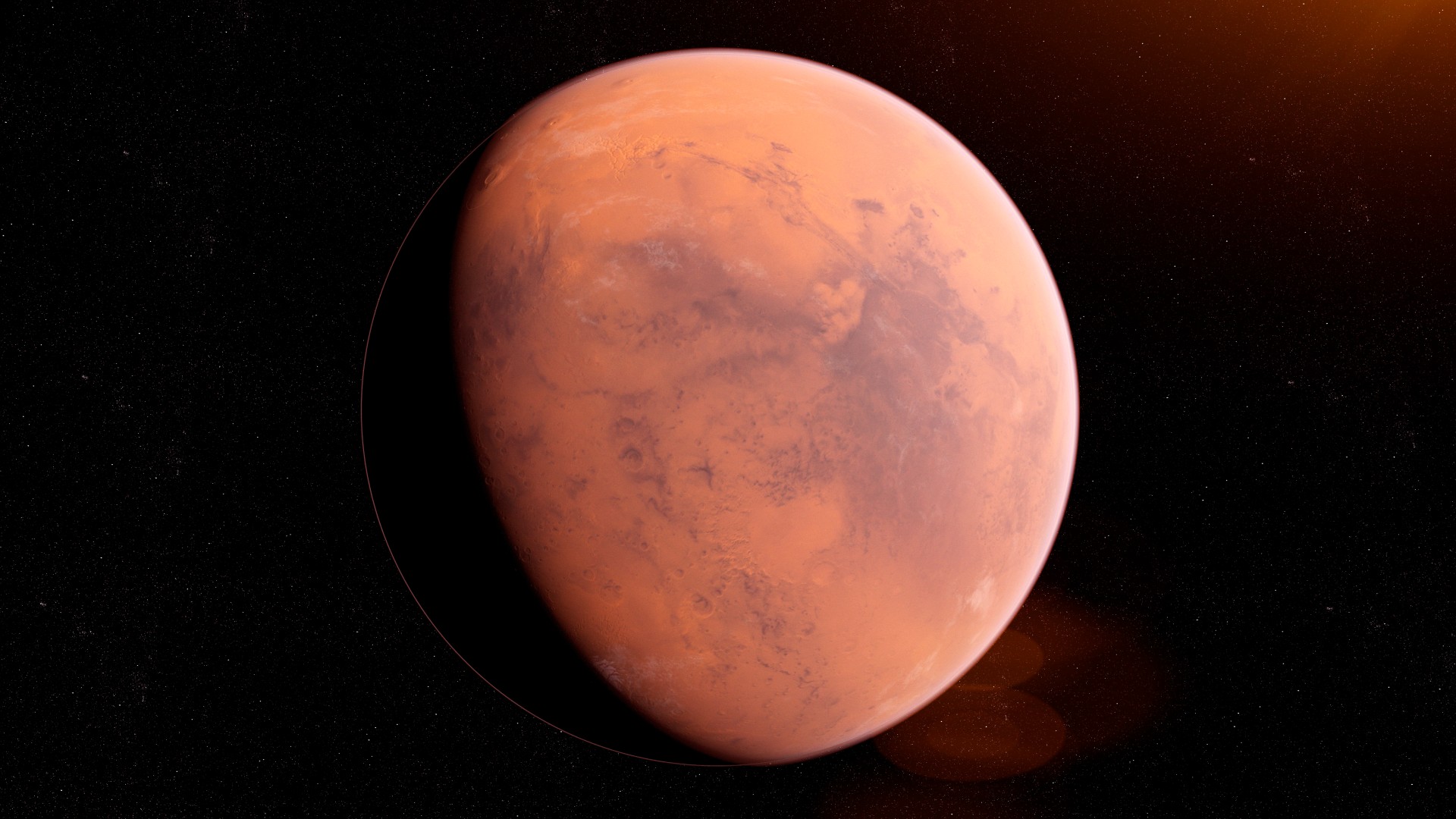Enormous hidden ocean discovered under Mars could contain life
Scientists examining data from NASA's InSight Lander have revealed the likely presence of an underground reservoir containing enough liquid to cover the planet with a mile of water.

Geophysicists have discovered a gigantic hidden ocean beneath Mars' surface, and they say it could harbor life.
The massive underground reservoir, discovered using seismic data taken by NASA's InSight Lander, contains enough liquid to cover the entire planet with a mile of water. However, it is far too deep to access by any known means.
Trapped inside a layer of fractured rock 7 to 13 miles (11.5 to 20 kilometers) beneath the Red Planet's outer crust, reaching the water would require a drilling operation that has yet-to-be achieved on Earth.
But if humans do access it one day, its discoverers say it's a promising place to search for life. The researchers published their findings Aug 12. In the journal Proceedings of the National Academy of Sciences (PNAS).
"Water is necessary for life as we know it," study co-author Michael Manga, a professor of earth and planetary science at UC Berkeley, said in a statement. "I don't see why [the underground reservoir] is not a habitable environment. It's certainly true on Earth — deep, deep mines host life, the bottom of the ocean hosts life."
"We haven't found any evidence for life on Mars, but at least we have identified a place that should, in principle, be able to sustain life," Manga added.
Related: In a 1st, NASA's Perseverance rover makes breathable oxygen on Mars
Get the world’s most fascinating discoveries delivered straight to your inbox.
Dried-up river channels, deltas and lake beds criss-cross Mars' surface, giving scientists ample evidence that water once existed in abundance on the surface of the barren planet. Yet roughly 3.5 billion years ago, an abrupt change in Mars' climate stripped the water from its surface.
What caused the rapid desiccation is unclear, although scientists have suggested it could be due to a sudden loss of the planet's magnetic field, an asteroid impact, or ancient microbial life that broke the planet with climate change. Pinning down the right explanation, and finding out where the water went, has become an important question.
To investigate the planet's interior for clues, the researchers behind the new study used data collected by NASA's InSight lander — a robotic seismology lab that studied the interior workings of the Red Planet from 2018 to 2022. InSight's sensors enabled it to record quakes of up to magnitude 5, which reverberated through the planet in the wake of meteor impacts and shifts from volcanic activity.
By feeding this data into a mathematical model similar to those used to find aquifers and oil deposits on Earth, the scientists mapped out Mars' interior to find "the thickness of the crust, the depth of the core, the composition of the core, even a little bit about the temperature within the mantle," Manga said.
Investigation of the deeper crust revealed that it most likely consists of a patchwork of fragmented igneous rock containing more than enough liquid water to fill Martian oceans. This is a sign that the water did not escape into space all those billions of years ago, but instead dripped down into the planet's crust.
Currently, reaching the secret ocean is comfortably outside humanity's technical abilities (the deepest hole ever dug on Earth, the Kola Superdeep Borehole, only burrows 7.6 miles into our planet's surface) yet it's not the only place scientists are searching for life on Mars.
In fact, samples of Mars' dust, and even evidence of ancient life, could have already been collected by the Perseverance rover, which has been exploring the surface of Jezero crater to collect geological samples since 2021.
NASA initially planned for a sample retrieval mission to launch sometime in 2026, but this date has since been delayed until 2040 due to budget concerns. The agency is currently soliciting proposals from private companies to speed up the mission timeline.

Ben Turner is a U.K. based staff writer at Live Science. He covers physics and astronomy, among other topics like tech and climate change. He graduated from University College London with a degree in particle physics before training as a journalist. When he's not writing, Ben enjoys reading literature, playing the guitar and embarrassing himself with chess.
